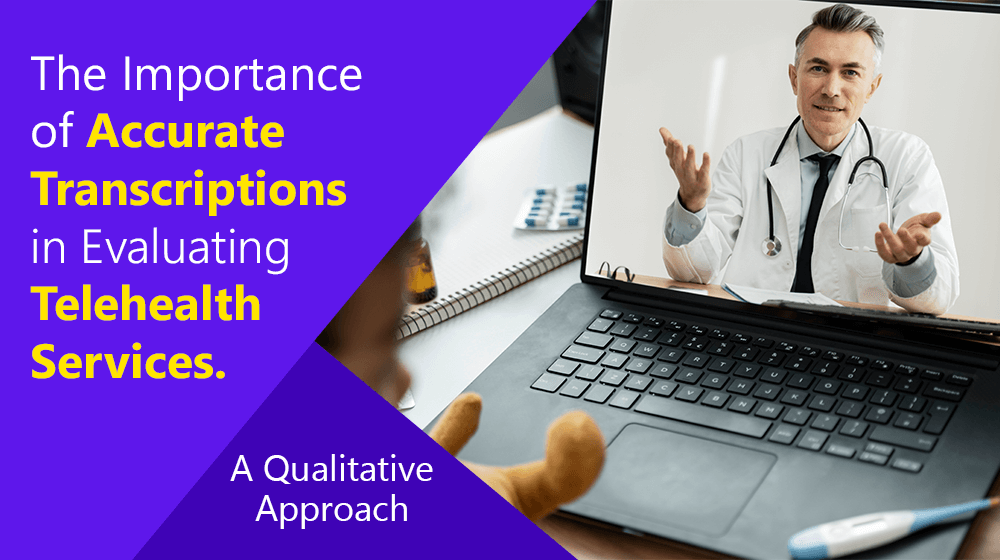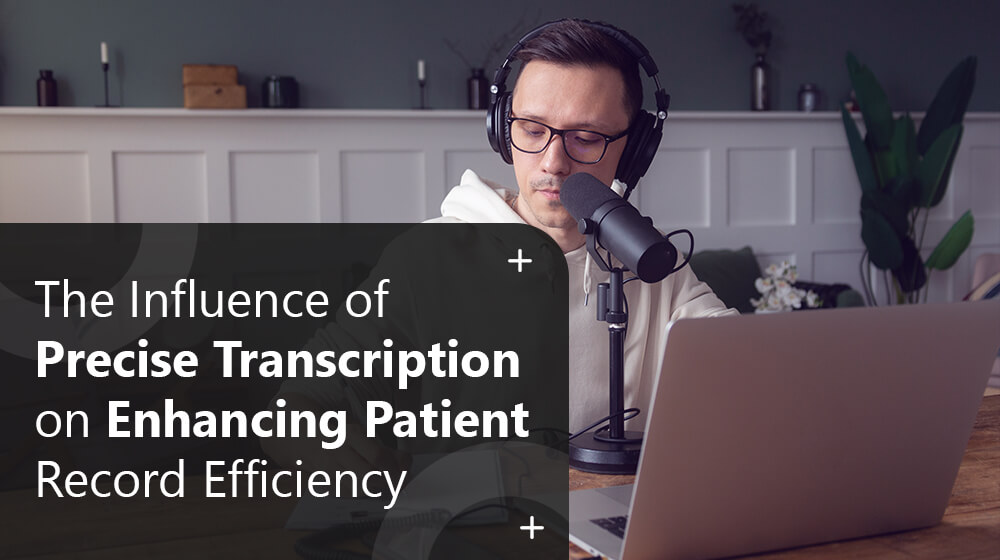According to the American Hospital Association’s (AHA) Information Technology Supplement, nearly 70% of hospitals across the United States are involved in electronic data exchange. This number is expected to increase with each passing year, as this data can be used to enhance patient care quality.
Read on and find out more about patient care, how digital data can help and what are the barriers that the healthcare industry can overcome using transcription services.
Digital Health Data and Patient Care
Digital health data refers to all the data collected and stored via digital mediums. It includes data from doctor-patient communications, telehealth services, virtual sessions, and data from medical transcripts. When used correctly, this data helps with improved patient care.
Crafting Tailored Health Journey
Every patient has a different healing journey. Some cope with ease while others struggle with medicinal allergies or need diverse consultation. Digital health data here helps in crafting a tailored journey for the patient.
For instance, digitally organized patient data coming to the healthcare provider through an application can have various sections, one indicating specific symptoms rare in nature. Special care can be taken with drug prescription and this data can be used for further reference.
In another case, doctors can also take help from digital data that acts as a patient’s journal. It can be for mental health issues, where patients’ data related to stress levels is monitored and stored in a customized application.
Keeping Chronic Conditions In Check
The road to recovery in case of chronic conditions is always patchy. For adults, timely medical intervention and precautions effectively control the condition. With a continuous digital health data stream, there is a chance of better management.
With monitoring programs, data can be used to detect abnormalities and inform patients about the associated risks. This is equally fruitful for those who reside away from hospitals and rely on virtual medical consultations. The datasets can also be used for alerting healthcare teams in specific areas.
Predictive Analytics For Prevention
Appropriate prevention holds the power to save patient lives, especially if the preventive measures are based on predictive analysis. By analyzing patient data, advanced algorithms can predict the likelihood of conditions such as strokes guiding early interventions like lifestyle changes or preventive medication.
Medication Safety Nets
Medication errors are a major risk in healthcare, but digital health data can reduce these errors through accurate prescribing and tracking. Tools like EHRs and electronic prescribing systems offer real-time access to patient medication histories, minimizing the chance of harmful drug interactions.
For instance, An elderly patient using a reminder app to manage their medications misses fewer doses and stays healthier, showing how technology can help people take their medications properly.
Real-Time Emergency Access
Access to a patient’s medical history in emergencies can be lifesaving. Digital health records give emergency responders and healthcare providers crucial information, like allergies, conditions, and medications, allowing for quick, informed decisions.
Consider a case of a car accident, paramedics can check a patient’s digital health records to find out about a penicillin allergy, preventing a dangerous reaction during treatment.
Challenges in Digital Health Data Storage and Management
Digital health data storage and management have significant challenges due to the sensitivity of medical information. Data privacy and security are major concerns, as healthcare data is a common target for cyberattacks. Managing large volumes of data from patient records, lab results, and imaging also requires efficient systems to prevent errors and data loss.
Compatibility between healthcare systems is important for seamless data sharing. However, different organizations often use various software, which can make data access challenging. Compliance with regulations like the Health Insurance Portability and Accountability Act (HIPAA) ensures that healthcare providers handle data with the highest standards of privacy and security.
Role of Medical Transcription Services
Medical transcription services address these challenges by providing accurate documentation. Converting audio recordings from healthcare providers into text ensures precise records, reducing errors associated with manual data entry and helping maintain organized patient records.
These services can integrate with Electronic Health Record (EHR) systems to enhance data sharing between healthcare providers, improving care coordination. By outsourcing transcription, healthcare professionals save time, focus on patient care, and ensure compliance with data regulations.
Conclusion
Digital health data improves patient care through personalized treatment plans, better management of chronic conditions, enhanced medication safety, and quick access in emergencies. However, challenges like data security, system compatibility, and regulatory compliance persist. Medical transcription services help overcome these issues by providing accurate documentation, improving data sharing, and enabling healthcare providers to focus on patient care.
At ANT Datagain, we provide customized and cost-effective medical transcription services designed to meet the unique needs of healthcare organizations, all while ensuring timely delivery.
















